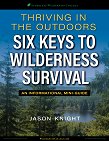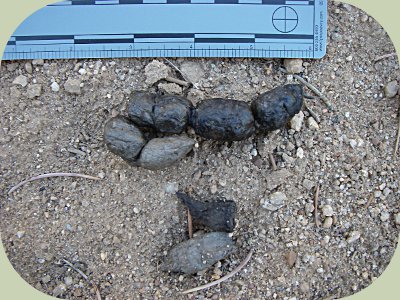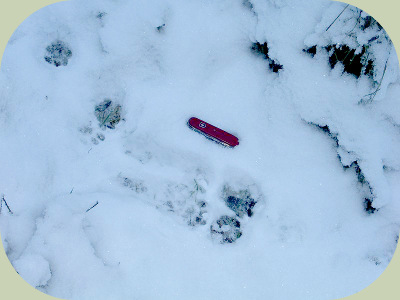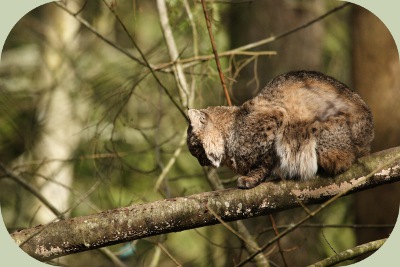Recognizing Bobcat Habitat

Learning to know where bobcat habitat is found can help you know more about the most abundant wild cat in North America. Bobcats are short-tailed, highly adaptable and tough felines found in many parts of the United States and Canada.
What is Bobcat Habitat?
Bobcats are adaptable felines that can be found in a wide variety of different habitat types. These include: deserts, sage-brush steppe, canyon lands, riparian woodlands, coniferous forests, broadleaf forests, chaparral, swamps and even suburban areas. All of these places are good bobcat habitat when they include good cover and plentiful prey.
What do Bobcats Eat?
Bobcats eat a wide variety of animals as prey, including: mice, rats, squirrels, rabbits, hares, small birds, grouse, small reptiles and amphibians. Bobcats are strict carnivores, unlike wild canines and eat no vegetable matter as food.
How do You Know When Bobcats Are Around?
When you are out exploring a natural area that is a likely good habitat for these wild felines, keep an eye out for their tracks and sign.
Tracks: the tracks of bobcats are asymmetrical, with 4 toes and metacarpal pad is bubble “m” shaped. The claws of bobcats, as in most cats, are retractable and generally do not show up in their tracks.

Fronts: 1 5/8 – 2 1/2 inches long by 1 3/8 – 2 5/8 inches wide. Overall front track tends to be larger and rounder than the rear.
Rears: 1 9/16 – 2 1/2 inches long by 1 3/16 – 2 5/8 inches wide. Overall rear tracks tend to be slightly smaller and more oval shaped than the front.
Be More Prepared For Your Next Outdoor Adventure!

Don't leave without knowing these six essential survival skills. Our free survival mini guide reveals the strategies of:
- Shelter & fire to prevent the number one cause of death
- Obtaining clean water to avoid life-threatening dehydration
- Common wild survival foods and other critical skills!

Scat: cylindrical, very compacted, strongly segmented. 7/16 – 1 inch in diameter and 3 to 9 inches long. Scats are often deposited in a scrape made by the hind feet.

Other sign: Scrapes tend to be 6 to 20 inches long by 3 to 7 1/2 inches wide. A close inspection of bobcat tracks can be used to determine the sex of the animal. For more information on this, please see: Bobcat Tracks Article.

Also, in the snow bobcats often leave marks called "sit-downs" where the animals stop and sat on its haunches. This is often done by hunting bobcats and lynxes, in areas where views of possible prey are good.
Similar tracks: Bobcat tracks can be mistaken for the tracks of a cougar, which have very similar tracks, though they are much larger, averaging 3 to 4 inches in diameter.
Closing Thoughts
Knowing what makes good bobcat habitat and what kind of sign to look for in the landscape, will help you increase your chances of seeing these elusive wild cats. Also, learning to recognize their tracks will help you learn more about their natural history and their life in the wild.

By the way, when you're out tracking or looking for wild animals, it's important to know how to stay safe in the outdoors, especially if you were to get lost. Right now you can get a free copy of our mini survival guide here, where you'll discover six key strategies for outdoor emergencies, plus often-overlooked survival tips.
Further Resources
For field-based training, check out our Wildlife Tracking Courses.
Further information on bobcats can be found here:
Bobcat on Animal Diversity Web
Bobcat Information at Defenders of Wildlife
Resources: Elbroch 2003, Eder 2002, and Reid 2006.

Photo of a wild bobcat from a trail cam at Alderleaf Wilderness College.

About the Author: Filip Tkaczyk is a periodic guest teacher at Alderleaf. He also wrote the field guide Tracks & Sign of Reptiles & Amphibians. Learn more about Filip Tkaczyk.
Return from Bobcat Habitat back to Wildlife Tracking Articles
Is The Essential Wilderness Survival Skills Course Right for You? Take the "Online Survival Training Readiness" Quiz
See for yourself if this eye-opening course is a good fit for you. It takes just a few minutes! Get your Survival Training Readiness Score Now!

Grow Your Outdoor Skills! Get monthly updates on new wilderness skills, upcoming courses, and special opportunities. Join the free Alderleaf eNews and as a welcome gift you'll get a copy of our Mini Survival Guide.

 The Six Keys to Survival: Get a free copy of our survival mini-guide and monthly tips!
The Six Keys to Survival: Get a free copy of our survival mini-guide and monthly tips!
Learn more